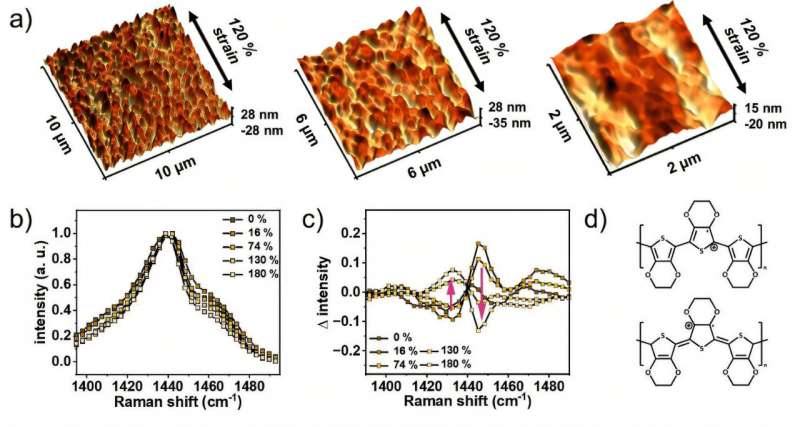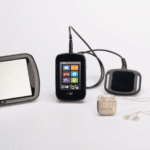Researchers at the Max Planck Institute have enhanced the stretchability and conductivity of PEDOT:PSS using a novel plasticizer diffusion method, this advance paves the way for next-gen wearable biosensors that are as soft and flexible as human skin.

In the pursuit of ultra-flexible, skin-like electronics for health monitoring, a research team at the Max Planck Institute for Polymer Research has developed a novel method to improve both the electrical conductivity and stretchability of PEDOT:PSS—a promising conductive polymer. This dual enhancement tackles one of the biggest challenges in wearable electronics: balancing electrical performance with mechanical flexibility.
Published in Advanced Science, the study introduces a transfer-printing technique where plasticizers from a stretchable substrate diffuse into a PEDOT:PSS film. This interaction alters the polymer’s morphology, resulting in significant improvements in its mechanical and electronic behavior.
“Stretchability and conductivity are often opposing requirements,” explained Dr. Ulrike Kraft, who leads the Organic Bioelectronics Research Group. “But our method allows us to enhance both properties simultaneously.”
The transfer-printing approach allows PEDOT:PSS films to be deposited onto flexible, biodegradable substrates. As plasticizers migrate from the substrate into the polymer film, they boost chain alignment within the polymer, improving charge transport and increasing conductivity—even under strain. This self-modifying interface paves the way for electronics that can bend and stretch with the human body while maintaining performance.
“Using various techniques—from atomic force microscopy to Raman spectroscopy—we could observe the structural and electronic evolution of the material under stress,” said Carla Volkert, lead author and doctoral researcher. “The chain alignment we saw is particularly exciting, as it directly contributes to better conductivity.”
The research offers not just material improvements but also foundational insights into the behavior of stretchable conductors. Applications range from flexible ECG electrodes to on-skin biosensors capable of detecting sweat-based biomarkers such as stress hormones.
The team’s next focus is translating this material breakthrough into real-world stretchable biosensors. By merging comfort with performance, this innovation brings skin-like electronics a step closer to widespread medical and wellness use—promising seamless integration of sensing technology into our daily lives.









